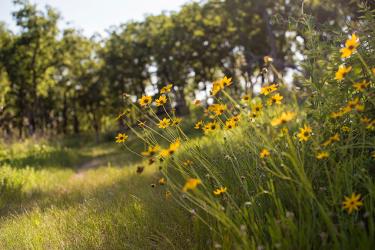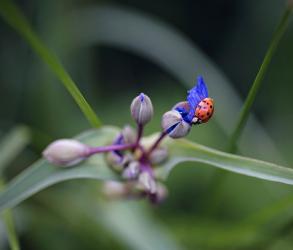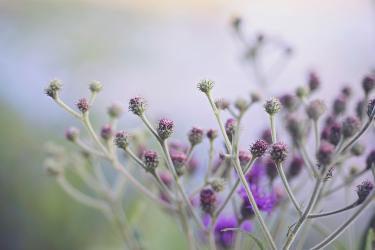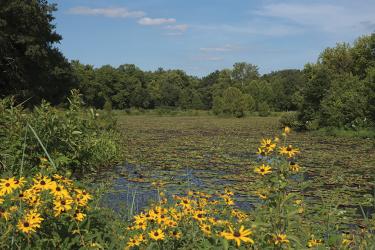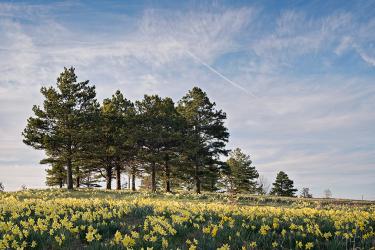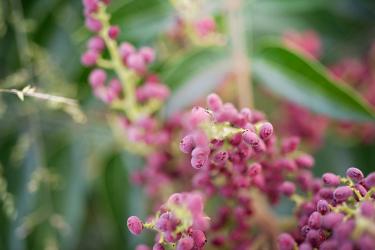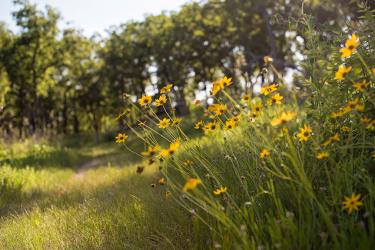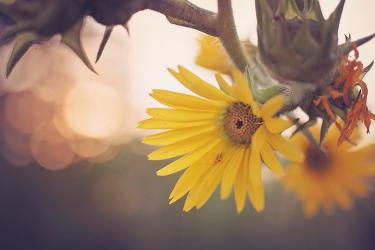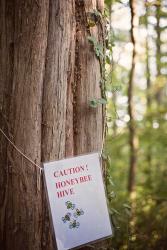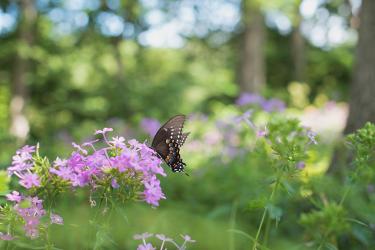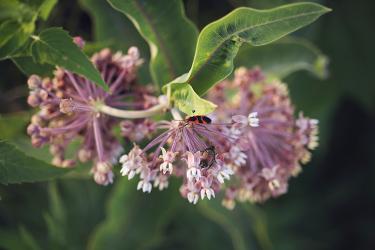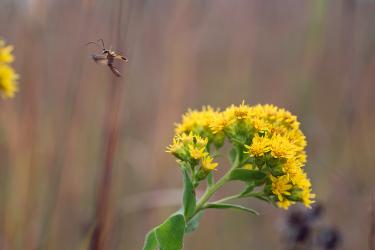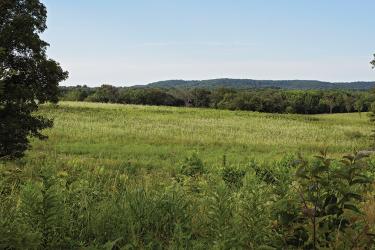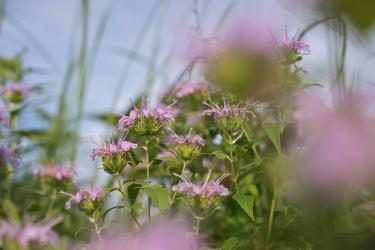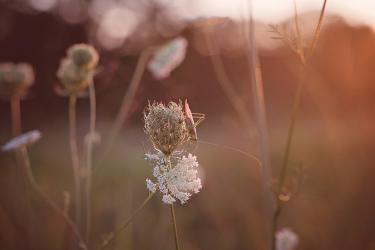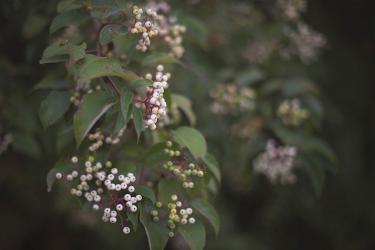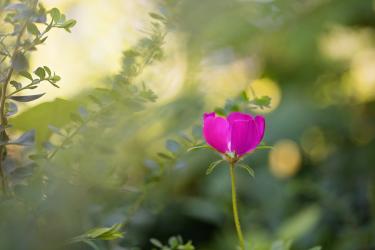For plant lovers, the Missouri Botanical Garden’s Shaw Nature Reserve is a 2,441-acre gem of breathtaking, ethereal beauty. But, it is by hard numbers that this ecological masterpiece, just off historic Route 66 in Gray Summit, 38 miles from the garden itself, can truly blow visitors away.
That such a naturally majestic and ecologically educational place exists at all is a testimony to the truth of the old saying that “it is an ill wind that blows no good.” In the early 1900s the wind over many large cities in the United States and Europe was exceedingly ill. The burning of soft coal for heat and energy left a blanket of smoke and soot hanging in the air. The lack of clear air and sunlight played havoc with living things, particularly during the winter months. During one particularly bad period, it was estimated that St. Louis residents inhaled 15 tablespoons of soot over a five-day period. Plant life suffered as well. The experts at the Missouri Botanical Garden worried that the institution, then nearly 60 years old, could no longer exist on its city site.
The soot and smoke created a particularly dire threat to the garden’s famed and valuable orchid collection. Not only was the collection notable in itself, it provided financial support to the garden through the sale of orchids to numerous florists. As early as 1917, the damage to the orchids and outdoor plants, particularly evergreens, was noticeable. By 1923, garden officials knew they had no choice but to move many plant collections, if not the entire garden, away from the city location.
Finding the right spot wasn’t easy. Large numbers of plants needed to be moved; good roads were essential. In addition to the plants coming from the city location, they hoped to have a wide selection of native plants growing naturally on the site. The land needed to contain variety in the types of soils and typography, an ample water supply, and building materials such as rock, gravel and sand.
Money was tight. To finance the purchase, garden officials elected to sell 50 acres of garden founder Henry Shaw’s estate; city properties that were not part of the garden itself. Coming up with the right land at the right price was imperative.
By 1925 they had settled on an area of farmland around Gray Summit (now at the intersection of I-44 and Highway 100), where they were able to assemble a 1,300-acre parcel. A year later they added 323 adjacent acres on the south side of the Meramec River. An elegant brick home, now the Bascom House, came with the original property. Considered one of the most modern for its time, the home featured a bathroom on each floor, complete with a large, zinc-lined wooden bathtub.
Construction began immediately on the orchid greenhouses. Not long after that, garden officials activated plans for a Pinetum to be planted with needled evergreens such as pine, fir, spruce, cypress and juniper and would grow to eventually include over 450 species of conifers.
As they made their initial plans, garden officials commissioned landscape architect John Noyes, who had his own practice as well as working at the garden, to create a master plan for the property known as the Gray Summit Extension. Because there was the possibility that the entire garden would be moved to the extension, Noyes included formal gardens, fountains, sections for exotic plants and several buildings for plant display in his design.
For the orchids, the move, which finally took place in 1927, proved immediately beneficial. Within six months horticulturists reported a phenomenal improvement in the health of the plants. It was clear other plants would flourish at the extension as well. Between 1925 and 1930 experts measured 200 more hours of sunlight during winter months at the extension than at the city garden.
During the 1930s, the extension, which was only open to the public on certain days for orchid viewing, supplied more than 1,300 trees each year to the garden. In 1937, it was aptly re-named the Missouri Botanical Garden Arboretum.
The problem of soot and smoke in the St. Louis air came to a head on Nov., 28, 1939, “Black Tuesday,” when the air was so dark that street lights had to be turned on at noon. Laws requiring smoke abatement were passed, Washington University engineers pioneered ways to make that happen and cleaner burning, more expensive hard coal was substituted for soft coal. By 1942 only 22 more hours of winter sunlight shone at the Arboretum than at the city garden.
With no need to move the entire Botanical Garden to the country, the property could now take on a different role, and eventually open to the public for wildflower walks and daffodil displays. But it was with the ecological movement of the 1960s and the increasing interest in natural world that Arboretum became a place for students and the general public to study nature as it once was and could be again. Year after year Arboretum and Botanical Garden officials added more species, more acres of natural landscape, cut more trails and even established the Dana Brown Overnight Center, a group of authentic log cabins that starting in 1999 were collected from within 100 miles of the Reserve and skillfully restored and updated. The buildings blend into the natural surroundings and allow groups to experience the natural setting on a 24-hour basis.
In 2000, the Arboretum officially became the Shaw Nature Reserve. It is a continual resource for those who want to use native plants in their home landscapes as well as seeing those plants in a natural setting.
An outgrowth of soot and smoke, the Shaw Nature Reserve is fulfilling its mission to “inspire stewardship of our environment through education, restoration and protection of natural habitats and public enjoyment of the natural world.”
The Shaw Nature Reserve is open year round from 7 a.m. until sunset.



